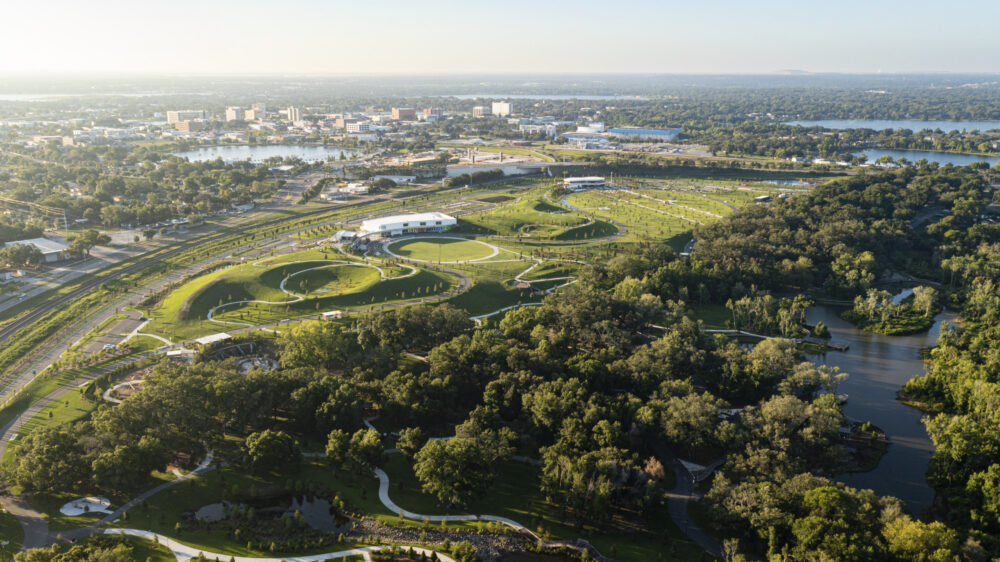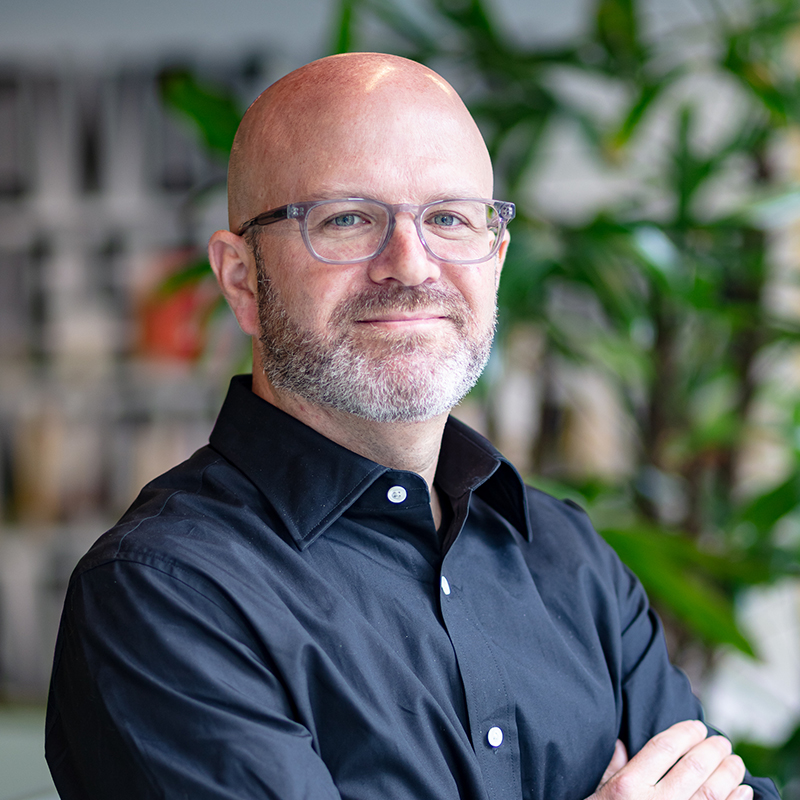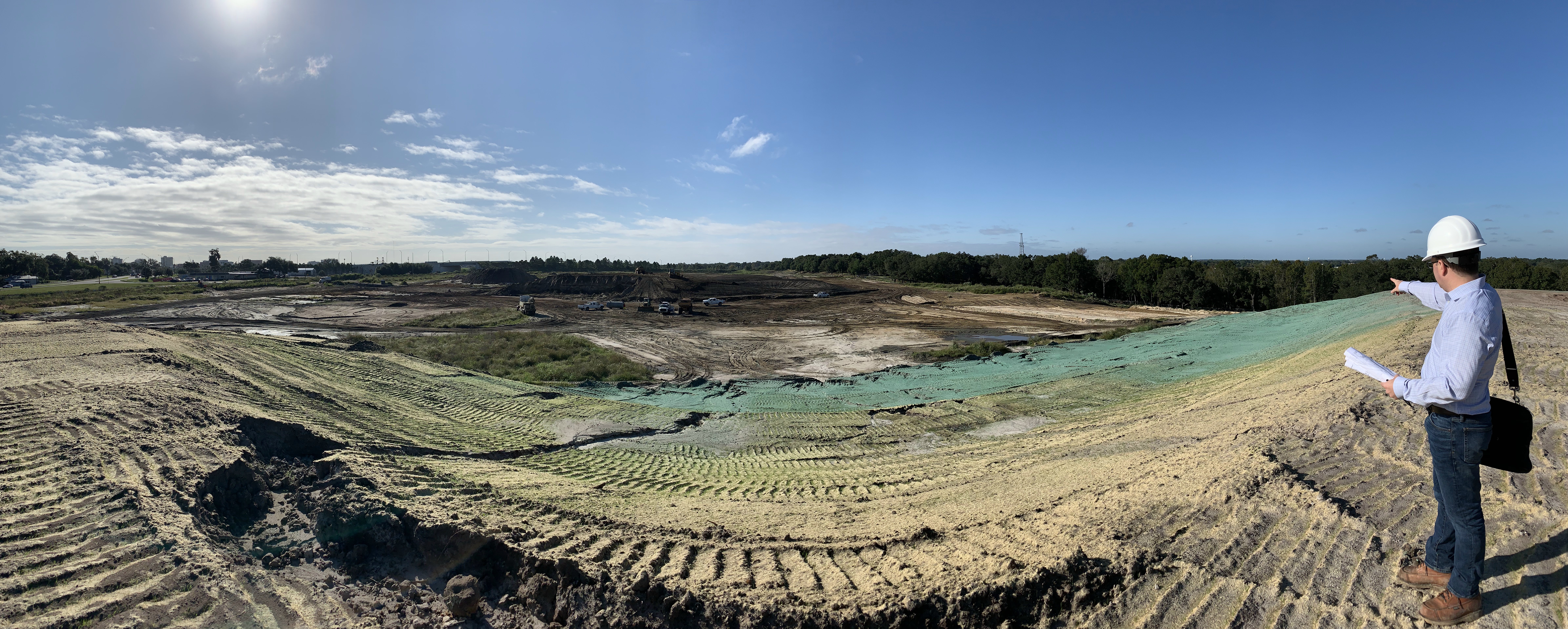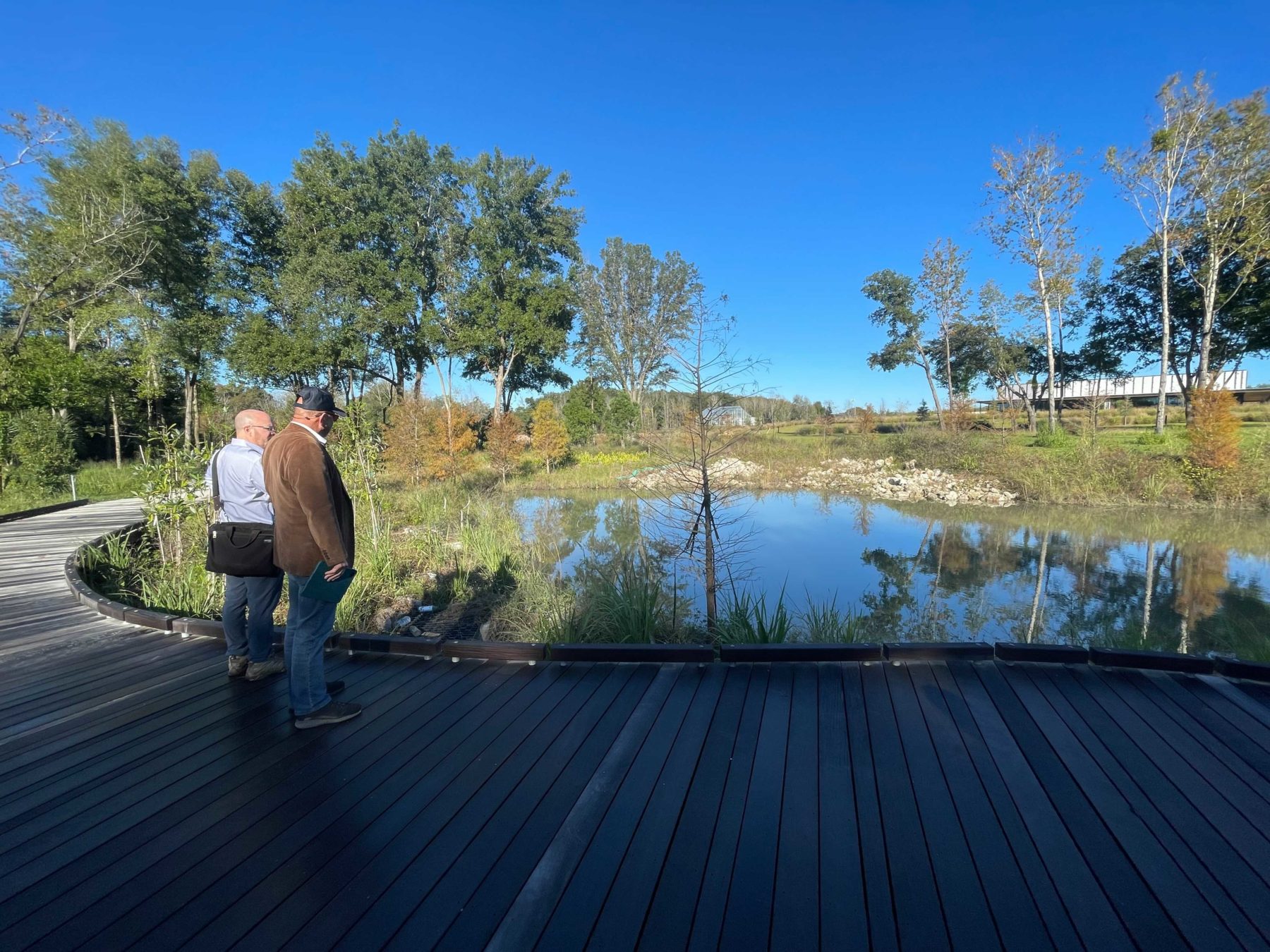
Bonnet Springs Park
Lakeland, FL
 Sasaki
Sasaki

Andrew Gutterman, landscape architect, has been promoted to principal. Gutterman works across the full spectrum of project types and has delivered award-winning results for civic, corporate, and institutional clients. His approach is both visionary and pragmatic, having collaborated with some of the world’s most celebrated architects, artists, and designers to create inspiring landscapes grounded in technical rigor. Gutterman’s background in ecology has helped foster a deep appreciation for the beauty and complexity of the natural world. On that background he has built a strong track record of bringing these qualities to the built environment in meaningful ways.
“Andrew has a remarkable ability to work across scales and project types, meaningfully connecting with clients to build trusting relationships along the way,” says Michael Grove, Sasaki principal and chair of landscape architecture and ecology. “He is also a thoughtful, empathetic mentor, patiently sharing his expertise ranging from construction detailing to navigating complex client relationships. Sasaki is thrilled to have Andrew as part of our leadership team.”
Learn more about what drives Andrew in his work and in his new role as principal:
Q: Tell us a bit about yourself and what brought you to landscape architecture.
A: I grew up near Hartford, Connecticut and was fortunate to have both the city and countryside easily accessible to me. From an early age I began to develop an appreciation for nature and the built environment. My parents also came from two very different backgrounds—my mom a professional musician and my dad a small business owner who grew up on a poultry farm—so I suppose the desire to create beauty while working with the land is part of my DNA.
After receiving a degree in ecology and gaining some experience in the field, I wasn’t totally satisfied with the career path that I could see ahead of me, which seemed to require a high degree of specialization. That’s when I began learning more about what landscape architects were capable of and the breadth of work possible. I remember receiving a pamphlet in the mail from the American Society of Landscape Architects about graduate school programs, and I knew right away that landscape architecture was going to be the profession for me. I began my training at Harvard in the late 90’s and have never looked back!
Q: What’s your vision for the future of the firm?
A: I’m incredibly excited about the moment we’re in right now as a firm and the direction we’re heading. There’s a real pioneering spirit to the place as is evident with the recent opening of two new offices (Denver and now New York) and our move to downtown Boston. That same energy continues to infuse our project work, and I’m continually inspired by the creativity of my colleagues. We have an understanding at Sasaki that the work we are doing is profoundly important, and I am surrounded by people with a desire to be a force for positive social and environmental change. Helping society adapt to the changing climate, for example, is one area where I believe Sasaki is really poised to be a leader in the field.
Q: Can you say more about that?
A: Sure! I believe that one of a designer’s primary roles is to help people live in harmony with their environment. As the environment changes and that relationship is disrupted, our job becomes even more important. Helping to restore a sense of harmony will require technical integration across many areas of expertise, which is a hallmark of Sasaki’s interdisciplinary approach.
The climate crisis cannot be solved through technology alone, though. Change is disruptive, and it’s crucial that we design with empathy towards the people being impacted. Being compassionate as designers will be one of the most critical aspects of taking on the climate crisis. Though I never met Hideo Sasaki, my understanding is that he was a great listener and a humble and compassionate human being, and I feel that his influence continues to live on in the ethos of the firm.
“I think being compassionate as designers will be one of the most critical aspects of taking on the climate crisis.”
Andrew Gutterman, principal
Q: What excites you when you start a new project?
A: Getting to know a new site is always exciting to me, since no two are alike. Uncovering a site’s history and unpacking how its physical condition came to be the way it is allows me to exercise my analytical brain while also being inspired creatively. In every project I work on, I try to look for its capacity to be restorative both environmentally and socially. Two examples from the work I’m currently involved with at Sasaki come to mind, though I think all of our projects share this quality in some way.
Q: How do these projects tackle both environmental and social restoration?
A: The first project that comes to mind is Bonnet Springs Park, which is set to open this October! It’s a large, 180-acre urban park in Lakeland, Florida being built on a former rail yard. A staggering ~500,000 cubic yards of soil had to be pushed around to address the soil contamination and water quality issues that were present on site. The design effort has been nothing short of heroic in terms of scope and scale. I can’t think of another contemporary example where one firm has been responsible for leading the design of nearly every aspect, including several significant works of architecture within the park. What I’m most proud of, though, is that the result is in fact very anti-heroic in terms of expression.
Q: What do you mean by anti-heroic?
A: None of the design gestures are dominant. Buildings emerge from the ground in some cases and in others they hover above it. Everything is subservient to the experience of the place as a whole and the ability for visitors to connect, to play, to learn, or to simply unwind in a verdant setting. I think of cities like Boston, New York, or London—places that were built over a long period of time—as being anti-heroic in a similar way. There’s great variety, but also cohesion, and I think we’ve achieved something like that in Lakeland and am super excited to share it with the world very soon.

Andrew overseeing earthwork at Bonnet Springs Park early on in its construction. The 180-acre park is within a rapidly growing urban area in Lakeland, Florida.

Andrew reviewing the performance of one of the constructed wetlands at Bonnet Springs Park during construction with client Bill Tinsley
The other project work I’m thinking about is at The Lawrenceville School, an independent school near Princeton, New Jersey. The work we’ve been doing there includes several new buildings like the Gruss Center for Art and Design and the Tsai Field House, as well as enhancements to the arrival experience, athletic facilities, and stormwater infrastructure, all of which grew out of the master plan we created for the school. As one of the best preserved examples of a Frederick Law Olmsted-designed campus, each of our interventions builds upon Olmsted’s idea of the campus landscape as a teaching tool. In fact, the environmentalist Aldo Leopold was an alum of the school and wrote several letters while a student there about the landscape he encountered. We hope our work will have a similar impact and help inspire the next generation of environmental leaders.
Q: One more question — what kind of tree would you be?
A: Great question! What comes to mind is the American Larch, also known as Tamarack, which is a very beautiful tree and one of the few species of deciduous conifers. So in a way it defies common distinctions between evergreen and deciduous trees and I can identify with that since I feel like I’ve been trying to evade binary distinctions—art vs. science, for example—throughout my career. It can also survive in extreme cold, and as a New England-based skier and surfer I know the struggle!